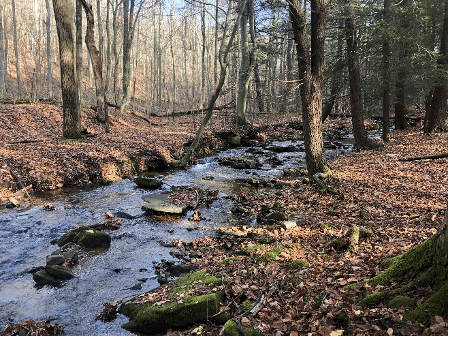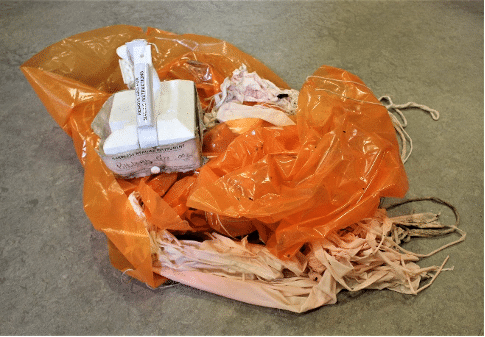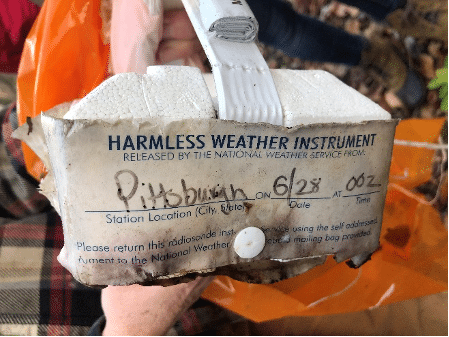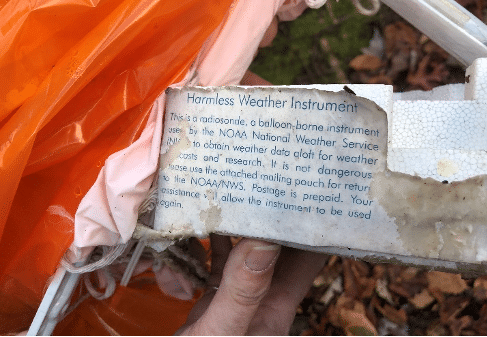A piece of debris was recovered by staff Friday afternoon while hiking along Powdermill Run at Carnegie Museum of Natural History’s biological research station, Powdermill Nature Reserve. What initially looked like nothing more than a pile of orange plastic garbage turned out to be something much more exciting! It was actually the remains of a weather balloon carrying a recording instrument called a radiosonde.

These devices are deployed by the National Weather Service in order to gather data about the upper atmosphere. A large balloon (5 feet in diameter) filled with helium or hydrogen gas carries the radiosonde upward at a rate of 1,000 feet/minute. The balloon can reach an altitude of over 20 miles before it expands (due to decreasing air pressure) to a diameter of 20-25 feet and pops. Temperatures at that height can be as cold as -130⁰F!

During its ascent, the radiosonde transmits data on temperature, pressure, humidity, and GPS location to a ground tracking antenna. GPS data indicate wind speed and direction during the flight. After the balloon pops, an orange parachute carries the spent instrument slowly to the ground, where it may be recovered and returned to the National Weather Service to be reused.


The radiosonde we found was deployed in Pittsburgh on June 28, 2020. Pittsburgh is one of 69 stations in the contiguous United States and over 800 worldwide. Weather balloons at each station are typically deployed at the same time each day, 365 days a year. Data from these instruments are used in weather forecasting, air pollution modelling, and climate change research. While removing litter from the environment is a great thing to do anyway, in this case there was a bonus learning and recycling opportunity included. Cool!
Andrea Kautz is a Research Entomologist at Carnegie Museum of Natural History’s Powdermill Nature Reserve. Museum employees are encouraged to blog about their unique experiences and knowledge gained from working at the museum.
Related Content
Finding Nature in Your Local Streams
